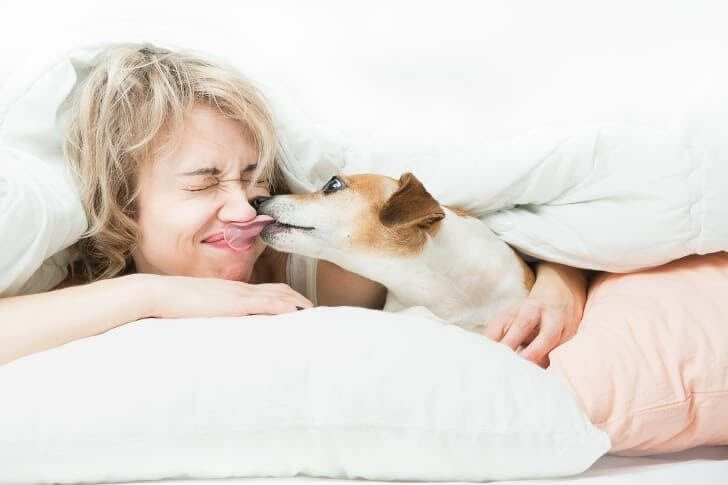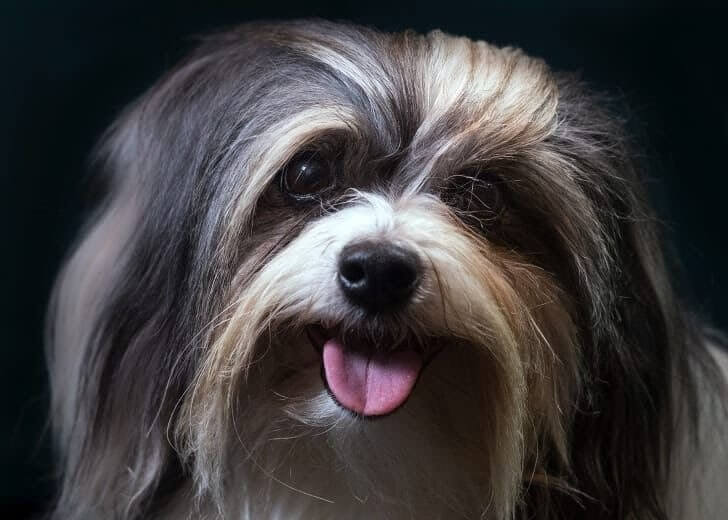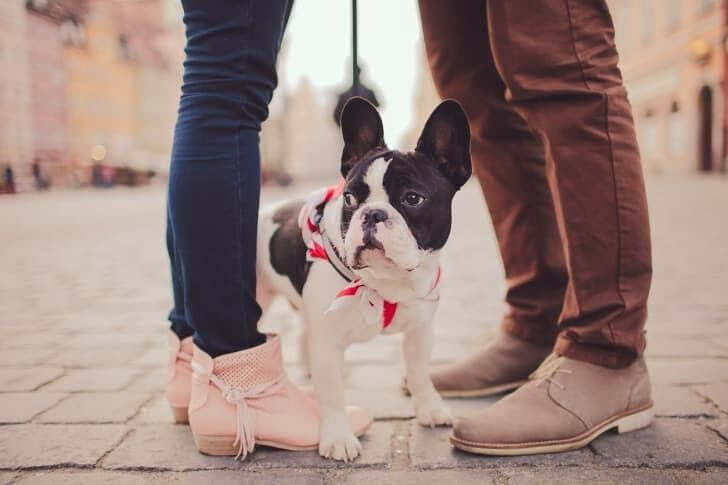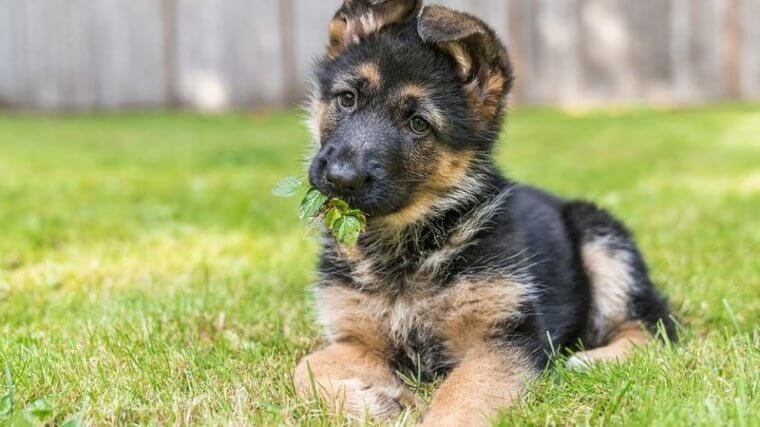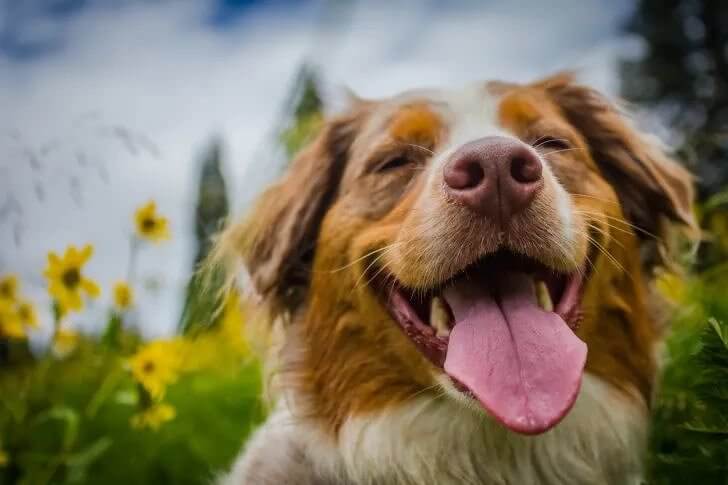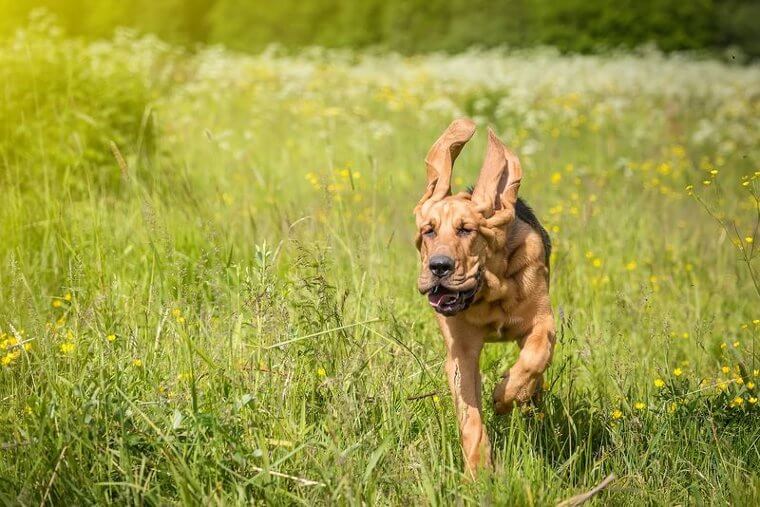Does this list even need an introduction? From the truth about your pup’s wet nose to the power of those puppy dog eyes, there are just as many amazing facts about dogs as there are amazing dogs in the world.
It is time to snuggle up with your good boy or girl and escape from the worries of the world by reading about the animal humorist Josh Billings called "the only thing on Earth that loves you more than you love yourself."
It is time to snuggle up with your good boy or girl and escape from the worries of the world by reading about the animal humorist Josh Billings called "the only thing on Earth that loves you more than you love yourself."
Dogs Lick People—And Other Dogs—For Numerous Reasons.
Whether your pup is young or old, chances are it has given you a sloppy, slobbery lick—and there are a few reasons why. When they’re puppies, dogs lick their mothers or owners to show affection or to indicate that they're hungry.
But when they’re adults, dogs lick to show submission to an authority figure. So the next time your dog licks you, know that they’re probably trying to let you know that they want something—likely food or attention (or both!).
Licking Makes Dogs Feel Better.
Showing affecting and wanting food aren’t the only reasons dog lick, however. The action also makes them feel better.
That slobbery kiss to your face releases endorphins that calm your dog and relieve its stress. (It’s not unlike what happens when people bite their nails.) But a lot of licking isn’t necessarily a good thing: If your dog is constantly licking itself, it might be bored or have a skin issue, so it’s best to have Fido get a check-up at the vet.
Dogs Circle Before Lying Down on Instinct.
If we spun around a few times before lying down to take a nap it would probably seem like a weird ritual or an adherence to an ancient superstition, but it’s a different situation with dogs.
For canines, circling before lying down is a behavior that evolved from their wild ancestors, whose nightly routine entailed pushing down tall grass to scare off bugs or snakes while forming a small bed. As it turns out, all that spinning achieves a lot.
Don’t Ever Leave Your Dog Alone in a Car.
It might be tempting to leave Fido in the car for a few minutes while you run into a store to just grab one quick thing or a cup of coffee, but do not do it. According to the American Kennel Club, a dog should never, ever be left alone in a car.
The temperature inside a car increases quickly, even if it’s not parked in the sun, and dogs overheat very easily—so unless you can bring them into the store with you, leave them at home when you run your errands.
At Birth, Puppies Are Basically Blind and Deaf.
When a puppy is born, its eyes are shut and its ear canals closed as part of an evolutionary trade-off. Because being pregnant can affect a carnivore's ability to hunt down food, canines evolved to have short pregnancies.
Short gestation periods meant that canine mothers would not need to take long breaks from hunting. But because dog embryos only spend about two months or so in the womb, puppies are not born fully developed—and neither are their eyes or ears.
Dogs Know the Power of “puppy Eyes. ”
If you’ve ever thought that your dog knew what it was doing when making puppy eyes at you, well … you’re not wrong. According to a 2017 study, dogs raise their eyebrows to make puppy eyes and other dramatic expressions when they know people are watching.
Shelter dogs learned this trick as well, and research has shown that canines who make use of their puppy eyes tend to get adopted more quickly than dogs that show other behaviors, like wagging their tails.
A Dog Will Improve Your Attitude.
Dogs don’t just offer their humans kisses and companionship. The feeling of joy you get while watching two dogs tugging on a stick in the park or when seeing a litter of adorable puppies wrestling with each other is actually really good for you.
According to research, spending time with puppers, especially when in high-stress situations, can ease tension in people. Dogs can also help lower your blood pressure—and they like going on walks, which is good for you, too.
One of the Most Expensive Dog Breeds Has Been Popular for Hundreds of Years.
The Löwchen—German for “little lion,” because they’re said to be that brave—is a small, affectionate pupper that has been popular since the Renaissance. You can even spy the dogs in some paintings from that period; the breed has looked the same for 500 years.
These hypo-allergenic dogs are long-haired and do not shed; they can weigh up to 15 pounds. Löwchens are very rare today—in fact, one of these cute canines will cost you around $10,000 in some parts of the world.
Dogs Are Capable of Understanding up to 250 Words and Gestures.
Admit it: You talk to your dog like a human when you think no one is looking. And if you think that your dog understands you, well, you are not wrong. They certainly know more than just sit, speak, shake, and stay commands.
According to animal psychologists, the average dog is about as intelligent as a 2-year-old kid—some breeds can learn up to 250 words. Dogs can even count up to four or five and notice errors in math problems!
A Wet Dog Nose Doesn’t Equal a Healthy Dog.
It's a myth that your pupper’s wet nose is a sign of good health, but the real reason for the moisture on Fido’s nose isn’t clear. One explanation is that dogs often lick their noses throughout the day to keep them clean.
Another is that the moisture helps keep them cool. Dogs don’t sweat like humans do; instead, they pant and let off extra heat through their noses. A special gland located in the nose produces a clear fluid that helps pups cool down faster.
Dogs Definitely Know How You Feel.
Dogs seem to know when you’re happy, when you’re sad, and every emotion in between—and that’s because your pup can read your mood. A study released in 2016 by the universities of Lincoln and Sao Paolo found that dogs can read and respond to the emotions on human faces, even in photos.
According to Reuters, this means that dogs “must have a system of internal categorization of emotional states. Among animal groups, it’s a cognitive ability previously only evidenced in primates.”
Dogs Have an Incredible Sense of Smell.
Based on how much sniffing they do, it’s probably no surprise that a pupper can smell anywhere from 10,000 to 100,000 times better than a human. That’s because canines have an astounding 300 million olfactory receptors, compared to humans’ paltry 6 million.
Not only that, the part of the brain dedicated to smell is 40 times larger in dogs than in humans. According to NOVA, that means a dog can smell a single teaspoon of sugar in 1 million gallons of water.
Dogs Breathe Differently Than People Do.

Dogs Can Get Jealous.
Anyone who has two dogs will probably tell you that when they’re giving attention to one, the other seems jealous—and as it turns out, they actually are jealous! In a 2014 study, scientists at the University of California, San Diego used a test usually given to 6-month-old babies.
The owner ignored their dog and instead lavished attention on an animatronic pooch. The real dogs tried to get between their owner and the faux Fido, even snapping at and pushing it—confirming that your pupper gets a little miffed when you pet other dogs on the side.
Dogs’ Feet Might Smell Like Popcorn or Corn Chips.
Ever wondered why your dog’s feet smell like the inside of a Frito bag? It’s because of the plentiful bacteria and yeast that grow on your pupper’s paws as a result of moisture that gets stuck between its toes.
Your pup has plenty of microorganisms on its paws, but the bacteria Proteus or Pseudomonas are the likely culprits that are giving Fido’s feet their tortilla scent. No need to wash your pet’s paws, though—a subtle smell is completely normal.
Guide Dogs Go to the Bathroom on Command.
Any dog slated to become a guide dog must go through rigorous training that involves learning (along with its human) how to get safely to a destination as a pair and how to stop for things like changes in elevation and obstacles.
Guide dogs are also trained to only go to the bathroom on command. Usually the owner will have a specific spot for the dog to do its business and will use a command word like, “go time” so they’ll know when and where to clean up.
Dog Names Have Changed a Lot Over the Years.
In Medieval times, a human might have named their dog something like Blawnche, Bragge, Holdfast, Mopsus, Mopsulus, Nosewise, Smylfeste, Zalbot, or Zaphyro.
Fast forward a few centuries: In 2019, the most common dog names were Luna, Bella, Charlie, Bailey, Lucy, Cooper, Max, Daisy, Bear, and Oliver. It was quite a jump for Luna, which means moon in Latin. According to pet insurance provider Trupanion, “Looking back 10 years, Luna was barely a blip on the name game chart … not even cracking the list of top 20 names.”
One of the Reasons Dogs Dig Is to Cool Down.
Digging isn’t just fun for dogs—according to the American Kennel Club, it also relieves stress and provides mental and physical stimulation. Genetics play a role in that urge to turn earth—perhaps the dog is on the hunt for prey, or trying to create a comfy den.
And it may seem counterintuitive, but when stuck on an open lawn with very little shade, unearthing a fresh layer of dirt untouched by the rays of the sun is one way for a dog to create a place to beat the heat.
Dogs Also Dig to Hide Stuff.
Picture this: Your dog is gnawing on his favorite bone when he gets bored. He knows he’ll want to gnaw on it again later—but he doesn’t want anyone else to have it. So instead of leaving it out in the open, he buries it where only he'll be able to find it.
Whether or not he'll actually go back for the bone is another story. Note: If your dog's motive for digging is destructive, he may need to burn off some energy.
Bowing During Play Is Practice for Attacks.
You may have wondered why your dog crouches forward—elbows on the ground, butt in the air, tail wagging—when it’s playing with another pup. One answer is that it serves an important evolutionary function: Dogs often use playtime as practice for attacking prey.
The bows are also used to communicate during play—to show they’re having fun, to revive a stalled play session, or as a sort of apology for getting a little too rough. While wild canines usually only bow for their own species, domestic dogs will bow for humans as well.
Some Dog Breeds Are Feline-Friendly.
Pop culture would have you believe that cats and dogs are enemies, but that’s not necessarily true. If you’re an ailurophile who wants a dog that won’t pick a fight with your feline, there are a few breeds you should consider, including Beagles, Golden Retrievers, Labrador Retrievers, Japanese Chins, and Papillons.
That said, every pupper has its own personality (and so does every cute kitty, for that matter!), so getting one of those breeds it’s necessarily a guarantee that Fido and Fluffy will be BFFs.
The Most Popular Purebred Dog in America Is the Labrador Retriever.
According to the AKC, since at least 2014, labrador retrievers, German shepherds, and golden retrievers—in that order—have been the most popular breeds in America. The reign of the Lab is long, and record-breaking.
These puppers have been #1 in the AKC's rankings for 24 consecutive years, the longest stretch a breed has been in the top spot in AKC history. French bulldogs and bulldogs came in at #4 and #5, respectively, and some evidence suggests that mutts are quite popular as well.
Beagles Are Named for Their Loud Bark.
Anyone who has a beagle is familiar with their impressive vocal cords, which are much fuller and louder than other pups’. The word Beagle probably comes from begueule, a French word that means “open throat.”
Beagles vocalize in three different ways: A standard bark for things like the doorbell or a treat; baying, a throaty yowl used when hunting to alert other dogs that they've picked up a scent; and a howl, which beagles do if they’re sad, bored, or hear another dog howling first.
In the Middle Ages, Hunters Had Tiny Beagles.
In the 13th century, hunters used pocket or glove beagles, so named because, at just 8 to 9 inches tall, the miniature pups were said to be able to fit in the palm of a leather hunting glove. Queen Elizabeth I was reportedly a fan; it’s said she let the itty bitty beagles play on the dinner table.
You can still find pocket beagles today, although they are a recreation of that breed. Regular-sized beagles are about 13 to 15 inches tall.
French Bulldogs Can’t Do the Doggy Paddle.
The origin of the French bulldog is murky. Many sources trace the breed’s roots to England, where lace makers, who preferred the toy version of the English bulldog, would use the smaller pups to warm their laps as they worked. Then, when the lace industry moved to France, the dogs went along, too.
There, the English bulldogs likely bred with terriers, resulting in bouledogues français, or French bulldogs. Because of their squat frames and bulbous heads, Frenchies can’t swim, so owners should keep a watchful eye on their pups if they’re near water.
Hot Dogs Are Named After Weiner Dogs.
If you’ve ever wondered why we call the deli product hawked by street vendors a “hot dog,” look no further. The tasty treat was originally known as a dachshund or little dog sausage because it looked like the short-legged hound (whose name is German for “badger dog,” by the way).
Accounts of how the name changed from dachshund or little dog sausage to “hot dog” vary, but some think the name was shortened when a confused cartoonist could not spell the original name.
Dogs Express Themselves With Their Tails.
Are you wondering what your pup is feeling? Take a look at its tail. A loose, side-to-side wag means the dog is at ease and untroubled. A more animated wagging, complete with hip movements, indicates that a dog is happy or saying hi to a person they love.
Meanwhile, if your dog’s tail is straight up, it means they feel confidence, or perhaps aggressive. But if its tail is down and curled between its legs, it usually indicates fear or submission.
Determining Dog Intelligence Is Based on Learning New Commands Quickly.
If you’re curious about how smart your dog is, try giving them this simple test: To make it to the top tier of intelligence, a breed has to be able to learn a new command after a mere five repetitions, and follow the first command they are given 95 percent of the time.
The breeds that are considered the smartest are Border collies, poodles, German shepherds, golden retrievers, doberman pinschers, shetland sheepdogs, Labrador retrievers, papillons, rottweilers, and Australian cattle dogs.
Some Dogs Look Like Puppies Their Whole Lives.
Although it’s rare, some dogs can have pituitary dwarfism, a hormone deficiency that causes the canines to be puppy-like forever—they even keep their puppy fur and high-pitched puppy bark, and they stay small in stature.
While it might seem desirable to have a perma-puppy, there are a number of health problems associated with pituitary dwarfism, including a shortened lifespan, infertility, and problems with their skin and teeth. Dogs with pituitary dwarfism can also be aggressive or anxious. The condition is most common in German Shepherds.
Some Dogs Are Capable of Holding Eggs in Their Mouths Without Breaking the Shell.
These days we think of Golden Retrievers as pets, but they were initially gundogs that helped their owners find and retrieve game they’d shot, usually birds. Because of this, Golden Retrievers have what’s known as a “soft mouth,” meaning they can carry things in their teeth without damaging them.
This is a very important skill for dogs tasked with retrieving their masters' hunting trophies. The dogs are so gentle that some can hold a raw egg in their mouths without breaking it.
Dogs Smell Other Dogs’ Butts to Learn About Them.
When a dog sniffs another dog’s rump, they’re trying to figure out who that dog is, and how it’s doing. Secretions released by glands in the butt can reveal things like the gender of the dog, its diet, its age, and its mood. It’s sort of like talking with chemicals.
One thing a dog won’t smell when taking a whiff is poop. The Jacobson’s organ is a special part of a dog’s nose that helps them ignore the smell of fecal matter so they can take a whiff of those other secretions.
Labrador Retrievers Aren’t Actually From Labrador.
Instead, this breed comes from a different part of Canada: Newfoundland. In the 1700s, Greater Newfoundland dogs and smaller water dogs bred, which resulted in St. John’s water dogs. These pups resembled modern day Labs except for their white muzzles and paws.
Fishermen used the St. John’s water dog to retrieve fish that fell off of their boats. That breed unfortunately went extinct, but it did serve as the ancestor for the Labrador retriever we all know and love today.
Lab Litters Can Have Pups of Every Color.
Regardless of the color of the parents’ coats, a single Lab litter can include black, chocolate/liver, and yellow puppies. This is because there are two genes that determine the pigmentation of the coat, which means one litter can have as much coat color variety as a human family has varieties of hair color.
There is a color that tends to be most dominant, however: Black, the original Labrador retriever color. The color is caused by a pigment called eumelanin, and chocolate labs have it too—just a little less of it.
Corgis Are Fantastic Cattle Herders.
The Welsh began using Corgis as herders likely as early as the 10th century. There were no fences in those days, because pastures were considered common land—so to keep a farmer’s cattle together and away from other herds, corgis would nip at their legs to get them to move them in the right direction.
Thanks to their proximity to the ground, corgis could easily reach the cows’ ankles. Their shortness also helped make them difficult targets of the retaliatory kicks of cattle.
Dogs Might Have a Dominant Paw.
Some research has shown that dogs favor a particular paw, just as most people favor a particular hand. According to one study, dogs are evenly split between lefties and righties, and some are even ambidextrous.
Other research, however, shows that dogs might switch their dominant paw depending on what kind of task they’re trying to complete. Dogs also have different blood types—in fact, they can even serve as blood donors for other dogs—and can get laryngitis from barking a lot.
It’s a Myth That a Dog’s Mouth Is Clean.
You may have read that a dog’s mouth is very clean—cleaner than a human’s, in fact, which may have made you more accepting of smooches from your pooch. Unfortunately, this simply isn’t true: The canine mouth is home to lots and lots of bacteria.
Lucky for you, many of the germs in your pup’s mouth are specific to the species, so you do not have to worry when your dog plants a wet one on you. Still, there are a few similar bacteria, so always make sure your pet’s shots are up-to-date.
Dogs Dream, Too.
If you have a dog, it’s probably not surprising to you that they dream—after all, you’ve probably noticed your pup kicking in its sleep. Studies have shown that dogs have a sleep stage where they breathe more slowly and their eye movements become rapid—sort of like REM sleep in humans.
And like us, dogs probably dream about the events of their day, whether it involved chasing a leaf or barking at the mailman. Smaller dogs dream more than large dogs, and older dogs dream more than dogs in the middle of their lives.
We Are Leaving a Lot to Our Dogs.
If what happens after we pass away is any indication, humans really, really love their pups. According to the World Animal Foundation, in the United States, approximately 1 million dogs have been named primary beneficiary in their owner's wills.
Even though the dogs are beneficiaries, they do need human help: Typically, a trustee will be placed in control of the money, a caretaker will care for the pets and ask for that money for their care, and an enforcer will ensure that the caretaker and trustee are using the funds properly.
There Is a Breed of Dog That Has Six Toes.
Typically, dogs have four toes on each foot, but the Norweigian Lundehund—whose name literally means puffin dog—has six toes on each paw. Each one is fully functioning. The dogs were originally bred to hunt puffins, and its toes (as well as extra paw pads) helped them climb the jagged, slippery rocks where puffins live.
Other special adaptations include an elastic neck that allows the dog’s head to bend back so far it touches its spine and flexible shoulders that create a unique gait.
Bloodhounds Are Super Sniffers.
The bloodhound has an impressive sense of smell—the strongest of any dog breed, in fact. (According to PBS’s Nature, they’re “often called a nose with a dog attached.”) The breed can distinguish smells a thousand times better than people can thanks to 230 million scent receptors in its nose.
The bloodhound’s sense of smell is so incredible that it's admissible as evidence in court. According to the American Kennel Club, “Even in these days of high-technology, no scenting device yet invented is as accurate as the Bloodhound nose.”
The Man Who Created the Labradoodle Really Regrets It.
The Labradoodles is one of the most popular breeds around, but its creator is no longer a fan. In 2019, Wally Conron —the now-90-year-old dog breeder who crossed a Lab and a Poodle in 1989 to create the first Labradoodle for a couple in Hawaii—said that creating the designer breed was his "life's regret."
Conron said that in creating the breed, “I opened a Pandora's box and released a Frankenstein['s] monster.” The pooches are prone to a number of health issues, including hip displasia and epilepsy.
Good News: Rates of Euthanasia Are Down.
In 2019, The New York Times looked at data from shelters in 20 American cities and discovered that, in recent years, rates of euthanasia—the practice of terminating animals’ lives—has dropped by 75 percent on average.
In Houston, 57 percent of animals brought into shelters were put down in 2012. Four years later, that number had plummeted to 15 percent. In that same timeframe, the rate of euthanasia in Philadelphia decreased from 36 percent to 13 percent, and from 46 percent to just 4 percent in Phoenix. Similar declines were seen in cities like Los Angeles and New York.

